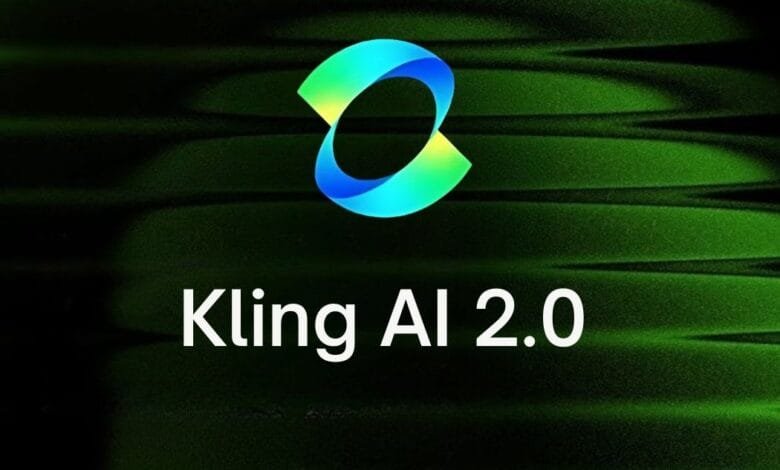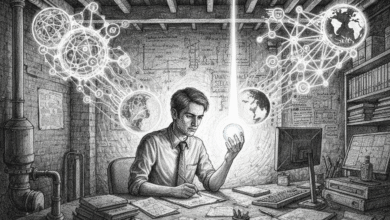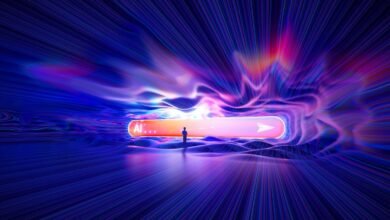Kuaishou Sharpens its Edge: Kling 2.0 and KOLORS 2.0 Integrate DeepSeek Smarts

▼ Summary
– Kuaishou has launched Kling 2.0 for video and KOLORS 2.0 for images, integrating DeepSeek’s language AI to enhance the creative process.
– Kling 2.0 can generate high-quality video sequences up to two minutes long at 1080p resolution and 30 frames per second, with improved prompt adherence for complex instructions.
– The Multi-Elements Editor in Kling 2.0 allows users to modify existing videos using text prompts and reference images, enhancing flexibility and reducing the need for traditional editing software.
– KOLORS 2.0 focuses on high-fidelity text-to-image generation with enhanced prompt adherence, cinematic quality, and various stylistic effects, supporting Kling’s video capabilities.
– DeepSeek-R1, integrated into Kling, assists users in generating and refining prompts, making AI content creation more accessible and user-friendly.
The artificial intelligence arena for creative tools is heating up rapidly, and Kuaishou is making sure it’s not just participating, but actively shaping the competition. Following the impactful announcements of OpenAI’s Sora and Google’s Veo 2, the Chinese tech firm, known for its massive short-video platforms, hasn’t just launched impressive new models – Kling 2.0 (“Master Edition”) for video and KOLORS 2.0 for images – it has also integrated powerful language AI from DeepSeek to streamline the creative process.
First hitting the scene around mid-2024, Kling 2.0 quickly established itself as a formidable text-to-video contender. Its headline feature remains the ability to generate high-quality video sequences up to two minutes long at 1080p resolution and 30 frames per second – a significant duration advantage over many competitors. But Kling 2.0, launched officially around April 2025, pushes beyond simple generation. Kuaishou emphasizes substantially improved prompt adherence, meaning the model now better understands and executes complex instructions involving sequences of actions, nuanced character expressions, and specific camera movements (like pans, tilts, zooms, and tracking shots). This focus addresses a key need for creators wanting finer directorial control over their AI-generated scenes.
Smarter Prompts, Multimodal Editing: Kling’s New Toolkit
A standout feature introduced with Kling 2.0 is its multimodal video editing functionality. Dubbed the ‘Multi-Elements Editor,’ this allows users to modify existing videos by adding, swapping, or deleting elements using a combination of text prompts and reference images. For instance, a user could potentially change a character’s outfit, add a new object to the scene, or remove an unwanted person from the background after the initial video is generated. This capability significantly enhances flexibility and reduces the need for extensive re-generation or traditional editing software for certain modifications, making sophisticated editing more accessible.
Underpinning these visual feats, Kling 2.0 continues to leverage advanced AI architectures, likely building on the Diffusion Transformer models noted previously, to ensure physical plausibility and temporal coherence throughout its lengthy clips. Improvements in motion dynamics mean more natural, fluid movements for characters and objects, even during complex actions or high-speed sequences.
KOLORS 2.0: Powering Still Imagery
Working in tandem with the video model is KOLORS 2.0, Kuaishou’s upgraded text-to-image generator. Launched alongside Kling 2.0, KOLORS focuses on translating text descriptions into high-fidelity images with enhanced prompt adherence, better cinematic quality, and support for various aspect ratios and over 60 stylistic effects. The quality of the still images generated by KOLORS 2.0 directly contributes to Kling’s video capabilities, particularly in understanding object appearance, texture, and lighting. Furthermore, new features within KOLORS 2.0, such as image “Restyle” (applying different artistic styles to an uploaded image) and inpainting/outpainting (adding to or expanding an image), mirror the multimodal editing philosophy seen in Kling, offering a more integrated creative suite.
The DeepSeek Connection: AI Assisting AI
Crucially, the visual evidence from the user interface and recent press announcements confirm a significant integration: Kuaishou has embedded DeepSeek-R1, a powerful large language model (LLM) from a separate Chinese AI lab, directly into the Kling AI platform. This integration appears focused on prompt assistance. Within the Kling interface, DeepSeek-R1 functions as an intelligent assistant, helping users generate, refine, or expand their creative ideas into effective prompts for both video (Kling) and image (KOLORS) generation.
Users can leverage DeepSeek to brainstorm ideas, flesh out concepts, or optimize prompt wording for better results. For example, a user might ask DeepSeek to “generate five prompts about a futuristic cityscape at dawn,” and the LLM would provide detailed suggestions ready to be fed into Kling or KOLORS. This integration aims to lower the barrier to entry for AI content creation, making it easier for users to articulate their vision effectively and achieve high-quality outputs. Kling also features an “Inspiration Word Bank” that works with the DeepSeek integration, offering users more granular control over specifics like scene elements, camera angles, lighting, and atmosphere.
It’s important to clarify the roles: Kling 2.0, developed by Kuaishou, is the core AI model generating the video. DeepSeek-R1, developed by DeepSeek AI, is the language model integrated to assist with crafting the text prompts that instruct Kling. This collaboration leverages DeepSeek’s recognized strengths in language understanding and reasoning to enhance the usability of Kuaishou’s sophisticated visual generation tools.
Competitive Dynamics in the AI Creative Space
This strategic integration of a specialized LLM for prompt assistance adds another dimension to Kling’s challenge against OpenAI’s Sora and Google’s Veo 2. While all three models push the boundaries of visual quality, motion realism, and prompt understanding, Kling 2.0 now boasts a potentially more user-friendly front-end for prompt creation via DeepSeek and unique post-generation editing capabilities through its Multi-Elements Editor.
Kuaishou executives have expressed strong confidence, claiming Kling 2.0 leads the industry in motion quality and semantic responsiveness, citing internal comparisons where Kling allegedly outperformed competitors like Veo 2 and Runway Gen-4 in key metrics. While such claims require independent verification, the rapid iteration, feature additions like multimodal editing, and strategic integrations like DeepSeek signal Kuaishou’s serious intent.
The global race in generative AI is clearly accelerating. With Kling 2.0 and KOLORS 2.0, enhanced by DeepSeek’s language intelligence, Kuaishou has delivered a potent combination aimed at empowering creators and lowering the hurdles to producing sophisticated AI-generated visual content. The focus now turns to real-world adoption and how these increasingly powerful, and smarter, tools will continue to transform creative workflows.





